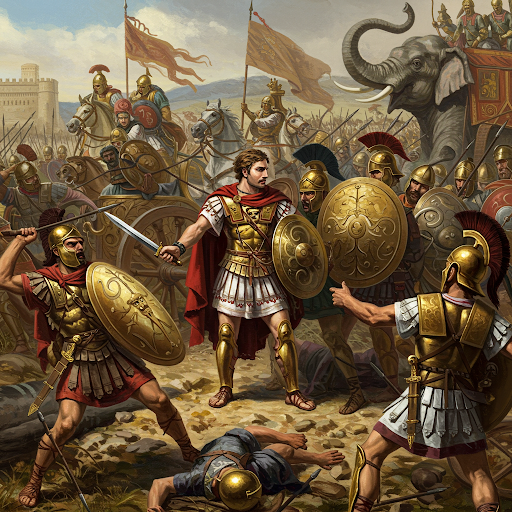Answered by Garrett Ryan, PhD, Greek and Roman History. Founder of toldinstone.com
The Spartans continued to practice a version of their ancient agoge (military training) through the end of antiquity, and occasionally even sent hoplites to fight alongside the Roman legions. Both their continued training and their military units, however, were more products of Roman fascination than of a living tradition…
A Roman-era bust of Lycurgus, legendary lawgiver of Sparta:
Sparta ceased to be a power in Greece in the mid-fourth century BCE, when the great Theban general Epaminondas inflicted two crushing defeats on the Spartan army, and liberated the helots of Messenia. Although the Spartans had several reformer kings in the fourth century BCE, they were never again able to control their neighbors, and became increasingly minor players in Hellenistic power politics.
This era of decline, paradoxically, was marked by a revival - bordering on a re-invention - of the ancient military training (agoge) associated with Lycurgus. In 195 BCE, however, the Roman general Titus Flaminius forced the Spartan tyrant Nabis to abandon all territory outside Sparta itself, and to discontinue the traditional military training. Only after a half-century hiatus was Sparta - now incorporated into the Roman Empire as a “free” (untaxed) city - allowed to resume its military traditions.
Sparta became a popular tourist attraction. The Romans admired Spartan discipline, and came in droves to watch the agoge in action. Augustus himself visited Sparta, and ate in one of the communal mess halls. Hadrian visited twice, and was even elected patronomos, an official charged with upholding ancient customs.
For the benefit of a Roman audience, “ancient” rituals of endurance and punishment were remembered - or more probably, invented. The most notorious was the diamastigosis (flagellation) that took place at the Temple of Artemis Orthia. Here, in a temple ringed by seating for spectators (see the reconstruction below), Spartan teenagers were whipped in a contest of endurance, often to point of death. As Plutarch says in his Ancient Customs of the Spartans:
“The boys in Sparta were lashed with whips during the entire day at the altar of Artemis Orthia, frequently to the point of death, and they bravely endured this, cheerful and proud, vying with one another for the supremacy as to which one of them could endure being beaten for the longer time and the greater number of blows. And the one who was victorious was held in especial repute. This competition is called 'The Flagellation,' and it takes place each year.” (40)
The Sanctuary of Artemis Orthia:
The Spartans’ actual military exploits under Roman rule were less impressive. Although the Spartans were at least formally obligated to send soldiers to the Roman army through at least the first century CE, it is unclear whether or how often they did so.
The eccentric Roman emperor Caracalla equipped a unit of Spartans in ancient fashion and brought it with him on his Persian campaign. As Herodian says:
“He [Caracalla] also summoned picked young men from Sparta and formed a unit which he called his Laconian and Pitanate battalion.” (4.8.3)
In a letter he (apparently) wrote to the Parthian king, Caracalla informed him that the Romans were “invincible with spears” - another possible allusion to the Spartans (4.10.3).
By the end of the fourth century, however, even these echoes of Spartan glory had faded. Alaric and his Visigoths sacked the city in 396 CE, apparently without resistance:
“Even Sparta shared in the common captivity of Greece, being no longer fortified with warlike defenders” (Zosimus, New History 5.6)










